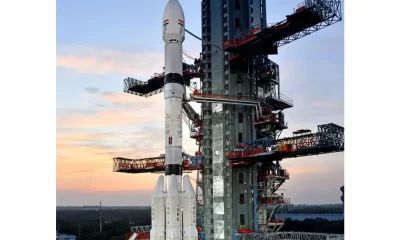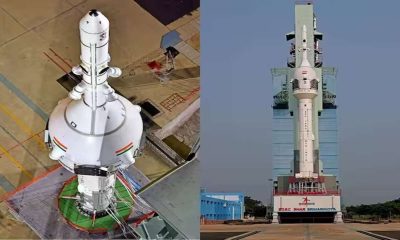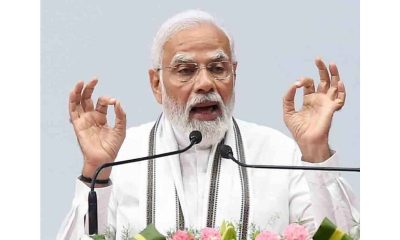India News
Obituary: UR Rao – pioneering satellite technologist and proponent of ‘ISRO Culture’

[vc_row][vc_column][vc_column_text]~By Dinesh C Sharma
The Indian Space Research Organistaion (ISRO) is today counted among the best space agencies globally. Much of the credit for this goes to UR Rao who helped the agency master technology for making complex communication, weather and remote sensing satellites with limited resources and difficult circumstances such as technology denial.
Having started his career as a doctoral student of Vikram Sarabhai in 1954 at Physical Research Laboratory (PRL) in Ahmedabad, Udupi Ramachandra Rao spent his scientific career spanning almost half a century for developing and nurturing the Indian space programme. After a brief stint in America as a postdoc at Massachusetts Institute of Technology (MIT) and Jet Propulsion Laboratory (JPL), Rao returned to India at the behest of Sarabhai.
Throughout the 1960s, Sarabhai was feverishly trying to put together a plan for developing space technology applications in India after having successfully set up the sounding rocket facility at Thumba in Kerala. He asked Rao, who had worked on spacecraft systems while being at NASA, to prepare a blueprint for development of space technology in India. Then he asked Rao to implement the plan. The rest of Rao’s life was spent in doing so, beginning with the fabrication of India’s first satellite – Aryabhata – launched in April 1975.
Aryabhata, weighing 358 kg, was built from scratch by a young team of engineers and scientists put together by Rao at a newly created facility in the Peenya industrial estate in Bangalore. The facility later became the ISRO Satellite Centre with Rao as its founding director. The Soviets launched Aryabhata from the Kapustin Yar Cosmodrome, without charging any fee, purely as a friendly gesture. This was followed by launch of Bhaskara 1 and 2, and Rohini series of satellites.
If Aryabhata got a free launch from the Soviet Union, the first experimental communication satellite – Ariane Passenger Payload Experiment (APPLE) – was launched for free on a development flight of Ariane vehicle of European Space Agency (ESA) from Kourou in 1981.
The American media ridiculed India’s foray into space when it was ridden with other problems as poverty. News weekly, Newsweek, carried a picture of APPLE being transported from the hanger to test center in a bullock cart with a caption ‘Collision of Centuries’. Many years later, Rao explained in an interview why the satellite was carried on a bullock cart: “We had to ship the satellite for EMC (Electromagnetic Interference/Capability) testing, and trucks made of metals were throwing off reflections that were affecting the satellite’s antenna. Then somebody hit on the idea of a bullock cart, which is made of wood. It worked perfectly.”
With the experience gained from building experimental satellites in the 1970s, Rao came up with an ambitious idea of building larger communication, remote sensing and multi-purpose satellites with practical applications. Thus were born the legendary series of Indian satellites in the 1980s – the INSAT (Indian National Satellite) and IRS (India Remote Sensing Satellite) – which provided communication, broadcasting, weather and earth observation services to a variety of Indian users. Thus within two decades, Rao could demonstrate the applicability of space technology for national development, as envisioned by his mentor Sarabhai. This is despite the problems Rao was facing in the 1980s with successive failures of Augmented Satellite Launch Vehicle (ASLV).
In all, over 20 satellites were designed and launched under his guidance. Besides laying the foundation for self-reliance in satellite building, Rao is credited with building a new way of executing complex technology project – which many call the ‘ISRO Culture’. All space projects are complex, challenging, multi-disciplinary, time-critical, and – in the case of India – have to be executed with limited budget. Rao mastered this art. Leveraging his experience of working with NASA, Rao introduced a matrix management structure for managing projects by ensuring optimal use of available resources. The ISRO culture encompasses decentralized decision making for technology development, systems engineering, quality assurance, peer review and thorough failure assessment. Actually this is what differentiates ISRO from other scientific agencies in India.
Rao came from a humble background. He was born in Udupi in Karnataka. “I saw a train for the first time when I had to go to Bellary for Intermediate. I had never seen a train because no trains used to come to Udupi. They used to come to Mangalore, which is about 58 km from Udupi. Udupi was a taluka at that time, but there were four rivers, at each river you had to take a boat to cross and then take another one. It was a big effort going to Bangalore from Udupi,” Rao had recalled in an interview a few years ago.
He first thought of space technology while doing M. Sc. at Banaras Hindu University. “I said I wanted to be a space scientist. I was not sure my own professor would have welcomed it because at that time space was not a hot subject, but I had a dream. The main thing is we must dream and then you have to just dedicate yourself for that.” (India Science Wire)[/vc_column_text][/vc_column][/vc_row]
India News
Landslide hits Arunachal Pradesh, highway linking Indo-China border affected
Arunachal Pradesh Chief Minister Pema Khandu said that instructions have been given for the restoration of connectivity at the earliest
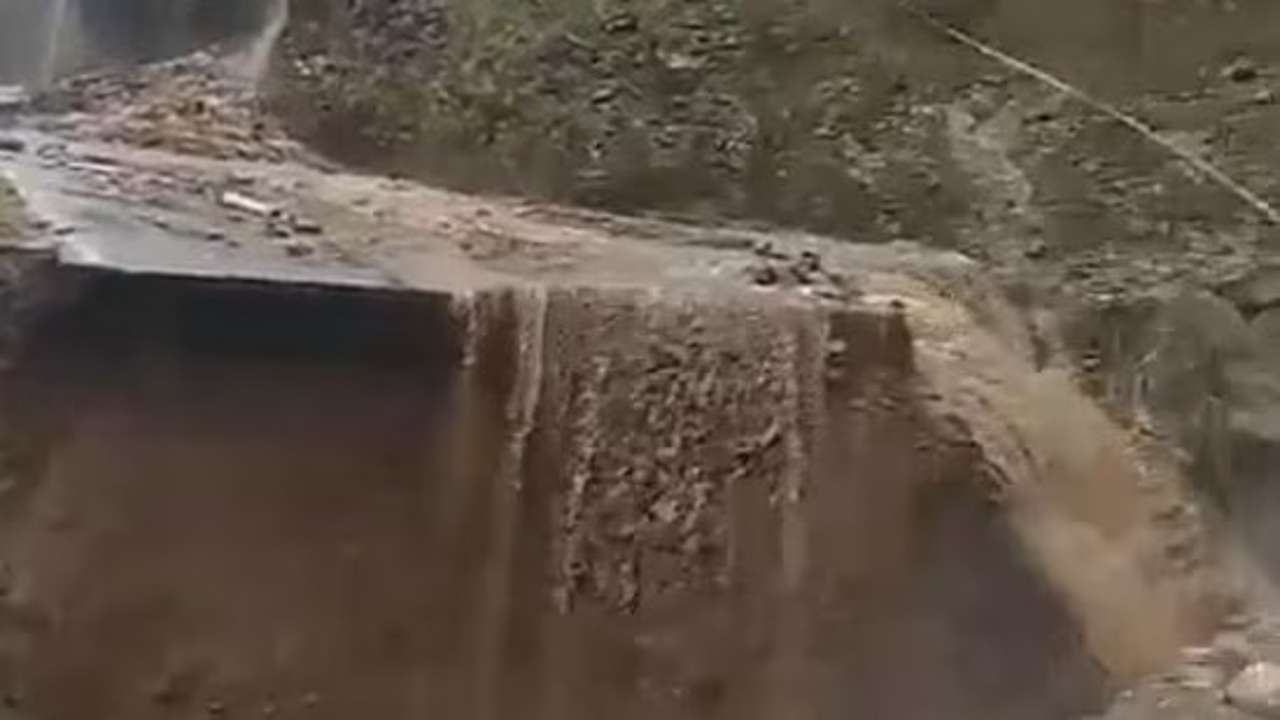
Arunachal Pradesh got hit by a massive landslide on Thursday, which destroyed a section of a roadway connecting the border with China. Additionally, it is the only path that links the district of Dibhang Valley with the rest of India.
Based on initial reports, there has been extensive road damage along the Roing Anini Highway between Hunli and Anini.
Arunachal Pradesh Chief Minister Pema Khandu expressed concern over the incident.
Taking to social media X, formerly Twitter, he tweeted, he is disturbed to hear that the massive damage to the highway between Hunli and Anini is causing commuters’ inconvenience. Since this road links Dibang Valley to the rest of the country, instructions have been sent out to restore connectivity as soon as possible.
The incident occurred as a result of the nonstop rain. The district government announced that the Roing Anini highway restoration project would require at least three days to inhabitants of Dibhang Valley.
Videos showed a section of the roadway was missing, making it hard for vehicles to cross throughout and creating problems for the security services and the people, who saw the highway as a lifeline in this difficult area.
In order to fix the damaged sections of the highway, the National Highways and Infrastructure Development Corporation Limited (NHIDCL) has mobilized resources. There is no shortage of food or other necessities at the moment.
All residents of Dibang Valley are notified that on April 24, 2024, an important portion of NH 313 connecting Anini to Roing washed away due to persistent rain in the district. It is estimated that restoration will take at least three (three days). Therefore, until the road is repaired and the rain returns to normal, all worries are advised, the statement said.
Meanwhile, Arunachal Pradesh’s West Kameng region was recently rocked by an earthquake of magnitude 3.0 on April 20, according to data from the National Centre for Seismology (NCS). The epicentre was located five kilometers below sea level at latitude 27.39 and longitude 92.68.
India News
Tamannaah Bhatia summoned in illegal IPL streaming app case, to appear before cyber cell on April 29
Actor Tamannaah Bhatia has been summoned for allegedly promoting the viewing of the IPL matches on the Fairplay betting app.

Actor Tamannaah Bhatia has been summoned by the Maharashtra Cyber Wing to appear for questioning for the illegal streaming of the 2023 Indian Premier League on Fairplay App, a sister app of the Mahadev betting app.
On April 29, the actor is scheduled to appear before the Cyber Cell for interrogation.
In the same case, rapper and singer Badshah was questioned earlier. In addition, actor Sanjay Dutt was also summoned in the same case this week on Tuesday, but he has requested an extension of time to appear before the department.
Even though the Fairplay app lacked official broadcasting rights, all of these actors and singers encouraged users to watch the Indian Premier League, which cost official broadcasters a lot of money.
An FIR was filed in September of last year in response to a complaint made by Viacom18, the company that owns the intellectual property rights (IPR) for streaming Indian Premier League games. According to the complaint, Viacom18 lost over Rs 100 crore as a result of the betting app Fair Play platform illegally streaming IPL matches on their platform.
Many celebrities, including Badshah, Sanjay Dutt, and Jacqueline Fernandez, were summoned for questioning after the filing of the FIR. An employee of the betting app was taken into custody in December of 2023.
A platform for betting exchange, FairPlay provides a large selection of sports and entertainment betting for leisure players.
The most popular sport on FairPlay, according to the app’s website, is tennis, football, and cricket.
According to the website, FairPlay streams every sporting event live so that users can watch and win at the same time.
Actors Ranbir Kapoor and Shraddha Kapoor, who had starred in advertisements for the Mahadev betting app, made news last year when the Enforcement Directorate (ED) called them in for interrogation.
2024 Lok Sabha Elections
Mallikarjun Kharge vows to continue politics till his last breath to defeat BJP
The 81-year-old Congress leader was speaking at a election rally in Afzalpur and said that if the people did not vote for the Congress candidate, he would think that he did not have any place in Kalaburagi anymore.

Congress President M Mallikarjun Kharge on Wednesday appealed to the people of Kalaburagi to at least attend his funeral if they thought he worked for them even though they do not wish to vote for Congress in the ongoing Lok Sabha elections.
The 81-year-old Congress leader was speaking at a election rally in Afzalpur and said that if the people did not vote for the Congress candidate, he would think that he did not have any place in Kalaburagi anymore. The Congress President sought an emotional chord with the people of his home district of Kalaburagi, Karnataka
The grand old party has fielded Kharge’s son-in-law Radhakrishna Doddamani from Kalaburagi, against BJP’s sitting MP Umesh Jadhav. Kharge had won the Lok Sabha elections from Kalaburagi in 2009 and 2014, but lost in 2019. He appealed to the voters to vote for Congress but at least come to his funeral if they thought that he had done some work in Kalaburagi. Kharge added that he would continue in politics till his last breath to defeat the BJP and RSS ideology.
The Congress leader said he is born for politics and whether or not he contests the election, he will continue to strive till his last breath to save the Constitution and democracy of the country. He asserted that he will not retire from politics. Kharge said that retirement happens from a position but one should not retire from his/her principles. He said he is born to defeat the ideology of the BJP and RSS and not to surrender before them.
He advised Karnataka Chief Minister Siddaramaiah, who shared the stage with him, to follow his principles. He said he had told Siddaramaiah many times that he may retire as CM or MLA, but he cannot retire from politics till he defeats the ideology of the BJP and RSS.
-
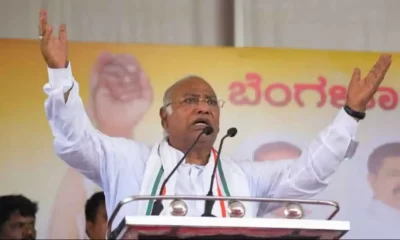
 2024 Lok Sabha Elections17 hours ago
2024 Lok Sabha Elections17 hours agoMallikarjun Kharge vows to continue politics till his last breath to defeat BJP
-

 2024 Lok Sabha Elections24 hours ago
2024 Lok Sabha Elections24 hours agoRahul Gandhi clarifies on wealth survey remark, says aim is to identify injustice
-

 2024 Lok Sabha Elections20 hours ago
2024 Lok Sabha Elections20 hours agoPM Narendra Modi slams Congress over Sam Pitroda’s inheritance tax remarks, accuses Congress of intending to impose higher taxes
-
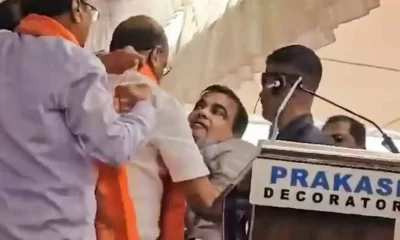
 2024 Lok Sabha Elections18 hours ago
2024 Lok Sabha Elections18 hours agoNitin Gadkari says he’s better now after collapsing at election rally in Maharashtra’s Yavatmal
-
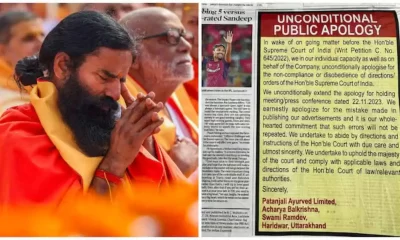
 India News23 hours ago
India News23 hours agoRamdev, Balkrishna publish bigger apology in newspapers after Supreme Court’s rap
-

 Trending22 hours ago
Trending22 hours agoA waiter’s life: Social media users go emotional on watching viral video
-

 Entertainment19 hours ago
Entertainment19 hours agoMadhuri Dixit, Karisma Kapoor recreate Dil To Pagal Hai dance battle on Dance Deewane
-

 India News57 mins ago
India News57 mins agoTamannaah Bhatia summoned in illegal IPL streaming app case, to appear before cyber cell on April 29



